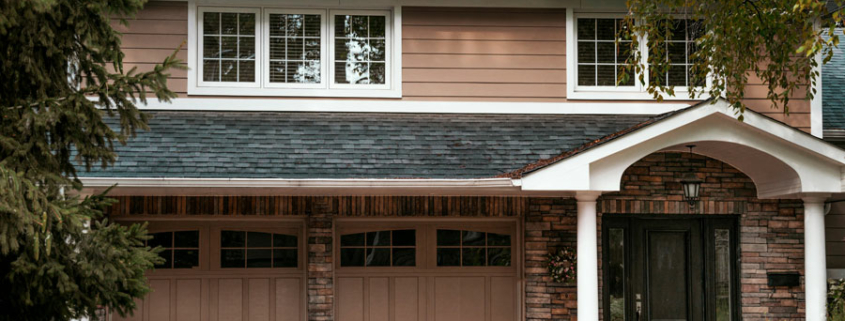Many if not all of us can relate to the function of a Garage Door and how they operate. From pulling the car or truck inside after a long day’s work or even the occasional weekend warrior to family projects that need to be done inside the garage. But did you know that through the constant usage of your garage door certain components may become defective over time and need to be either fixed or replaced. If defective garage door components are left unrepaired these can be a real safety hazard for you and your family.
Here are some facts to show you the dangers that garage doors can pose
and what to consider:
- Garage doors are typically the largest and heaviest moving objects in homes and they are held under high tension.
- Injuries caused by garage door accidents are responsible for 20,000 to 30,000 injuries every year. The garage door is one of the most dangerous parts of the family household and responsible for several dozen deaths every year. Most of the victims of these fatalities are small children.
- Sixty children have been killed since 1982 as a results of garage doors that did not automatically reverse upon contact.
Components that should be present at garage doors and what to look for:\
- Manual (Emergency) release handle. All garage doors should be equipped with this device. In case of an emergency the release handle will disengage or detach the door from the door opener when activated. These handles should be red in color and no more than 6 feet above the standing surface.
- Warning Labels. There should be a spring warning label, attached to the spring assembly. General warning label attached to the back of the door panel. Warning label attached to the wall near the wall control button and also a tension warning label attached to the garage door’s bottom bracket.
- Brackets and roller shafts.
- Door Operation. It’s important that the garage door move freely, it does not open or close too quickly and opens and closes without difficulty.
- Extension Spring Containment Cables. If your home has an older style garage door they may be using extension springs to couter-balance the weight of the door. If that isthe case they will require a containment cable inside the spring to prevent any broken parts from being propelled around the garage if the spring snaps. Most newer style garages use shaft-mounted torsion springs that do not require containment cables.
- Wall-Mounted switch. Most be present and positioned high enough so children do not gain access to switch.
- Automatic Reverse System. As of 1991, garage doors are required to be equipped with a mechanism that automatically reverses the garage door if it comes in contact with
an object. - Photoelectric Eyes. These eyes are located at the base of each side of the garage door and emit and detect beams of light. If that beam is broken it will cause the garage door to immediately reverse direction and open. Photoelectric eyes must be installed a maximum of 6 inches above the standing surface. In some cases you might see these sensors installed on the ceiling which is not a good location and is definitely a safety hazard for either children and even pets.
Safety Advice:
- Homeowners should not attempt to adjust or make repairs to the garage door springs. These repairs and adjustments should be left a qualified garage door technician. This is due to the springs being held under extremely high tension and those springs can suddenly and forcefully snap, causing serious or at times fatal injury.
- No one should stand or walk beneath a garage door while it is moving, especially children. It’s important to teach our children about garage door safety.
- Remember to keep fingers and hands away from pulleys, hinges and springs and the points between the garage door panels. When closing the garage door, body parts can easily become crushed if you are not careful.
As a reminder, garage doors and openers can be a real safety hazard for you and your family if certain key components are either missing or defective. It’s important to keep these components in good repair. If you happen to see a defect or a missing component, make sure to call a qualified garage door technician to make those necessary repairs. Again some of
these components are under extremely high tension and should be left to the professionals. We hope this information can better equip you and your family to have a safer home.





